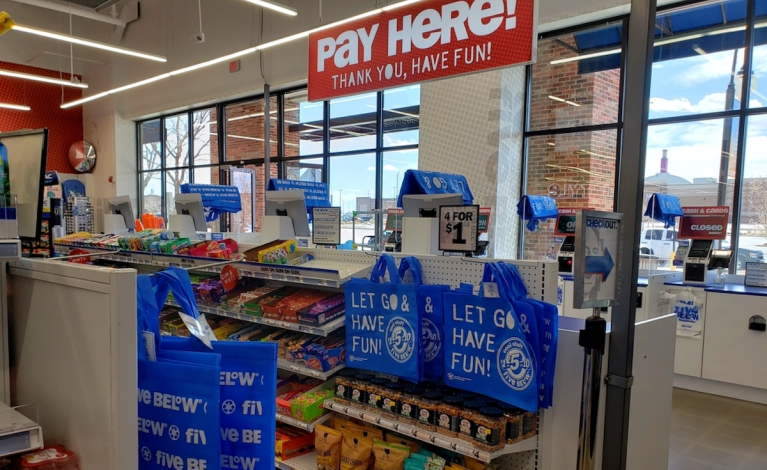
As retailers look for new ways to save on labor, the disadvantages of going all in on self-checkout are coming to light, with Five Below the latest to pull back on the technology.
The discount retailer, which targets Gen Z and Gen Alpha consumers and which has operated on a highly self-service-based model, shared Wednesday (March 20) alongside its fourth-quarter and full-year fiscal 2023 financial results that it is shifting away from pure self-checkout toward employee-assisted checkout in an effort to reduce theft, which has been on the rise.
“While we know shrink is an industrywide and a societal problem that accelerated over the last year, I want to be specific about what we are doing at Five Below,” the retailer’s president and CEO Joel Anderson told analysts on a call. “We tested many shrink mitigation initiatives late in Q3 into Q4, including product-related tests, front-end initiatives, and guard programs.”
He added that the “most significant change” the company made was reducing the number of available self-checkout kiosks, stationing an employee by the checkout area, later adding that, this year, the company is shifting to an assisted checkout model. Employees ring the items up, and then the customer completes the transaction themselves, choosing their payment method and paying.
“That is what we believe is a nice balance,” Anderson said. “[We’re] ensuring everything is being scanned, we’re providing a heightened level of customer experience, and then the associate can move on to the … next customer while the transaction piece is done.”
Last year, retailers faced approximately $142 billion in inventory shrink, marking a 25% increase from the previous year.
The move follows on a similar pivot announced by Dollar General less than a week earlier. With the company having self-checkout in 14,000 stores, Dollar General CEO Todd Vasos said recently that, in 9,000 of those, the company is immediately converting some or all of the self-checkout registers to assisted-checkout options. The goal in those stores is to drive customers to staffed registers first, and use assisted-checkout options only when traffic is high and lines are long.
These changes mark a shift in retailer sentiment over the past couple of years. PYMNTS Intelligence’s 2022 study “Big Retail’s Innovation Mandate: Convenience and Personalization,” created in collaboration with ACI Worldwide, revealed that 60% of U.S. retailers thought consumers would be very or extremely likely to switch merchants if not offered self-service kiosks.
In fact, retailers that have the resources to do so are taking a different tack, not pulling back on technology but rather stepping it up. For instance, Walmart-owned Sam’s Club is replacing the practice of verifying receipts as shoppers exit the store with artificial intelligence (AI)-powered technology that can visually scan customers’ carts.
Many consumers want self-checkout technologies, per research highlighted in PYMNTS’ ”Digital-First Banking Tracker® Series Report.” The report cited findings that 84% of consumers in the U.S. said they enjoy using self-service kiosks, and two-thirds of individuals said they favor self-service models over staffed checkout lanes.